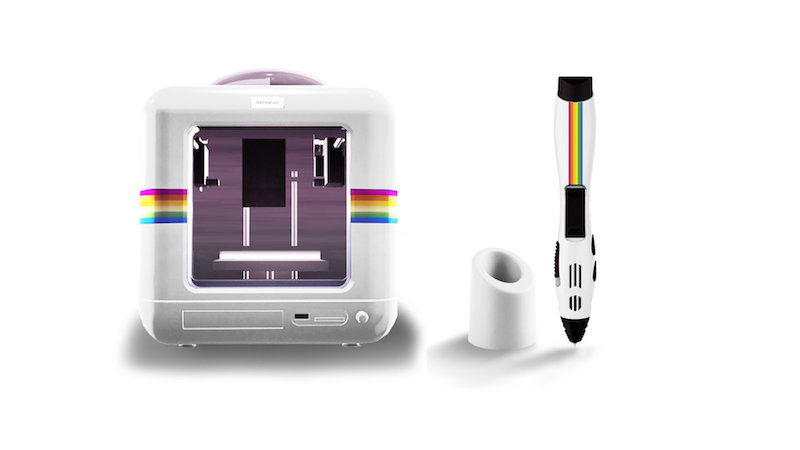Polaroid Revealed New 3D Printers and Pens at CES 2017

Polaroid is the company that we still associate with instant photography. The same company announced several new products at CES 2017 with a very different focus i.e. 3D printing and modeling. The aim of the new 3D printers and pens is to make the technology easy to use and more accessible to the general public.
3 new desktop printers.
At CES 2017, which takes place in Las Vegas, Polaroid announced it will be launching 3 new desktop 3D printer models, all of them will vary in size. Some details of the new machines include a layer resolution of 100 microns. It has a compatibility with standard 1.75mm filament, and also includes a child-safety lock feature, and print progress visualization. Also, the new range of Polaroid 3D printers can reportedly be controlled via iOS or Android apps.
Let’s start off with the 3D printers. Polaroid is launching three models of printers to choose from. These will vary in size but each of the units is manageable in a home or small office environment.
Auto-calibration & Built-in Wifi.
Polaroid ModelSmart 250S 3D Printer is a state-of-the-art Plug and Play desktop 3D printer with a large print area and varying speed and settings for layer height allow fantastic flexibility for multiple-purpose printing. The 3D printer ModelSmart 250S comes with auto-calibration and an in built wi-fi camera for monitoring your prints remotely.
Monitor using your smartphone.
A 250mm wide print bed in the 3D printer allows large scale models and multiple models at the same time to be printed. The vertical resolution of the prints ranges from 50 to 350 micron, which is 0.05mm to 0.35 per layer. The ModelSmart 250S is fitted with a wifi camera, which can be accessed via a smart phone app. You can also monitor your prints remotely from anywhere you have wifi access. The printer comes with a hassle-free detachable glass bed for easy Z-Axis application and removal of your models. Auto calibration can be done each time you print negating the need for manual-levelling.
3D Pens.
The 3D pens are designed in such a way that they allow you to design 3D models using ABS or PLA filament. Both of these models come with 10m of starter filament to get the user started. The two pens are generally similar but differ in two major ways. While the DRW100 3D is a wired pen, the DRW101 3D is wireless and comes with an internal battery and charging stand to accommodate that technology.
These are some of the key features of the Polaroid Play 3D pen:
- You can build your own freehand 3D models.
- You can use the unique Polaroid Play Trace App to stencil your own photographs and then bring them to life in 3D.
- You can trace templates that are already existing or that have been imported from the app and then assemble the parts together to create a 3D model.
- Polaroid Play 3D pen uses environmentally friendly plastic filament material.
- You can choose between manual or automatic extrusion.
- It gives you a choice of four print speed settings.
- It also includes auto-retraction while not in use to prevent filament blockages.
- The pen also features auto-turn off for added safety.
Collaboration with EBP.
Polaroid has collaborated with EBP which is Europe’s largest and longest established collector of remanufactured inkjet cartridges. The company has over 20-years’ experience and credibility in the print industry. This puts EBP in a position as the sole partner for the Polaroid 3D print solutions, within the European market.
Resembling Polaroid cameras.
The PLN1, which is an entry-level 3D printer has a passing resemblance to the Polaroid instant cameras. The PLN1 comes in pink, black, white and blue. It also includes several family-friendly features like an enclosed print area with a locking door to keep small fingers out of danger. The print bed isn’t made of metal. The same kid-friendly touches appear on the Polaroid DRW100. The pen displays the temperature of the filament and offers features designed for controlling the flow of PLA or ABS material.
Available this year.
The Polaroid printers are expected to cost between $499 and $799, while the pens are expected to priced between $129 and $149. The 3D printers are expected to be available in July, while the pens and filament will be hitting the market in March.

Bharat Mamtora is Online Marketer at Nimblechapps Mobile Game Development Company. We provide mobile game development services for iOS and Android Platform.




